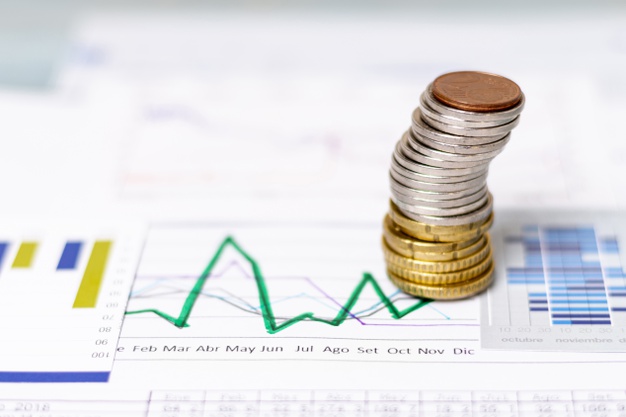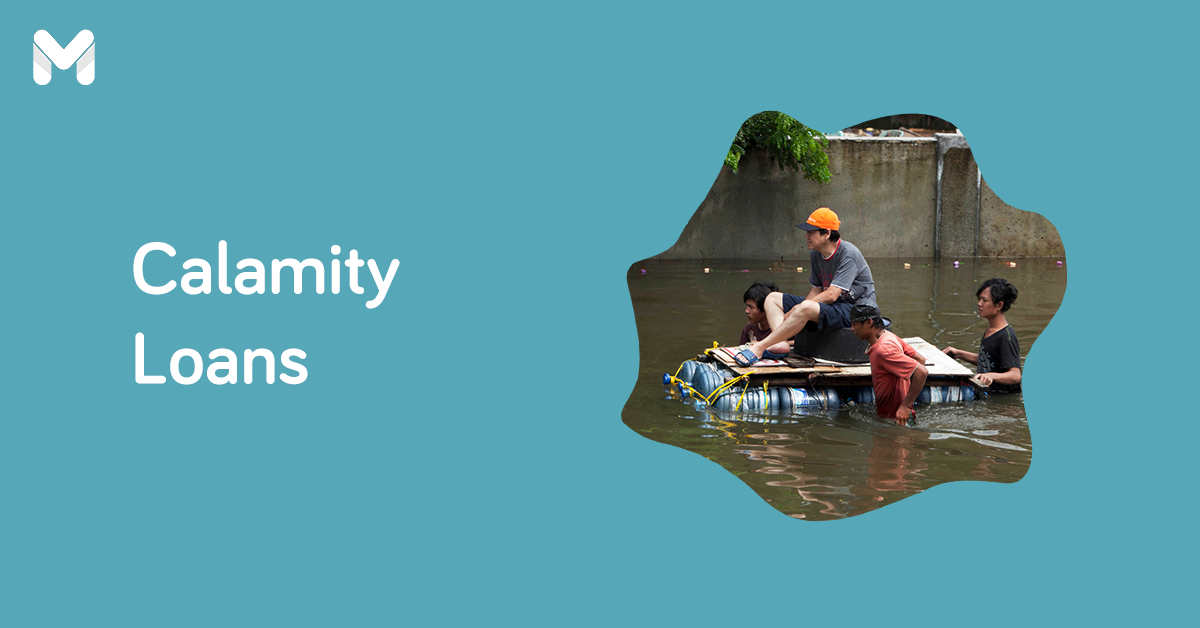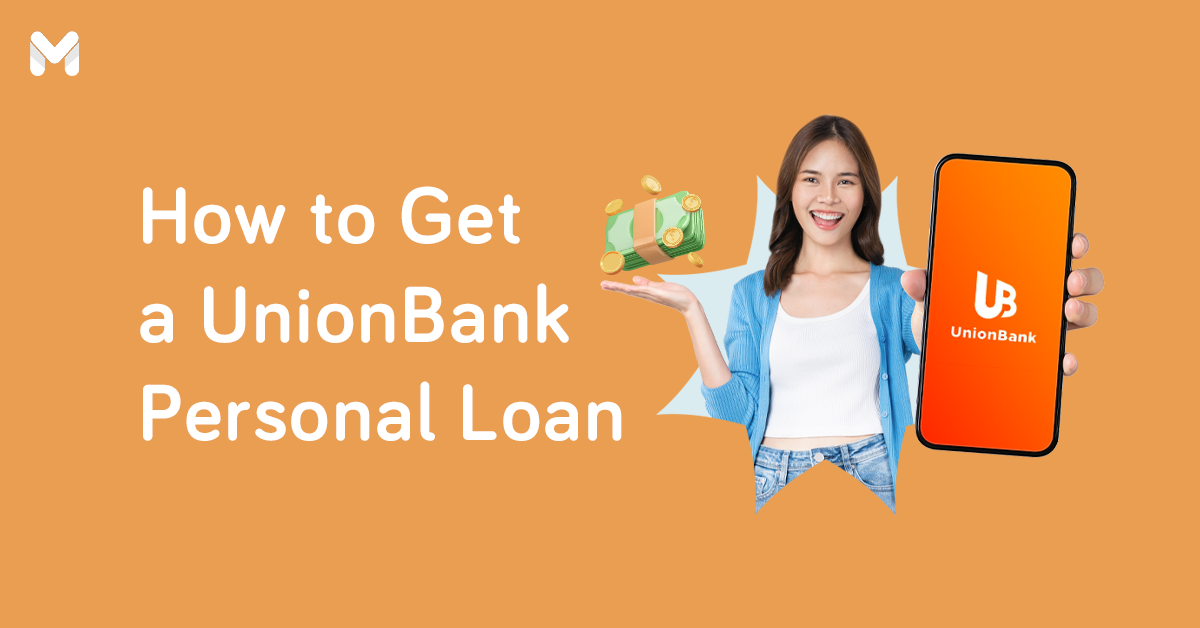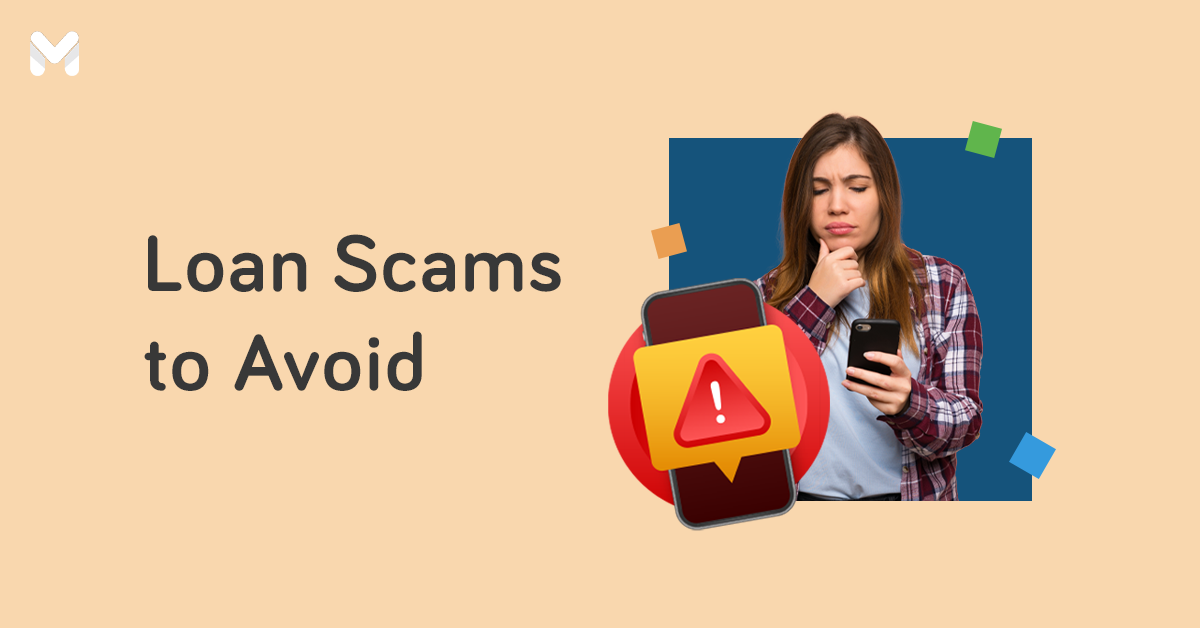Being short on cash is a reality that a lot of us face. Thankfully, there are many banks and lending firms that offer unsecured loans that allow you to borrow money without collateral.
However, it would be unwise to just go for the first lender that comes your way. You have to arm yourself with knowledge first, so you can make an informed decision. Otherwise, you’ll find yourself paying hefty amounts of interest and other fees that you didn’t anticipate.
This comprehensive guide provides all the important things you need to know about an unsecured loan, also known as a no collateral loan in the Philippines. We’ve also listed some reputable banks and lenders that you may want to consider.
What is an Unsecured Loan?
Unsecured loans are a type of loan issued by commercial banks and private lenders that require no collateral, meaning there’s no need to pledge a valuable property you own.
Examples of such properties include your car, house and/or lot, or even an ATM card. Most lenders in the Philippines offer unsecured loans without collateral for up to ₱1 million, payable in one to three years.
If you need money but don’t want to pledge collateral, then an unsecured loan might be a good option for you. A no collateral loan in the Philippines is also a viable option if you need to fund an emergency expense.
However, make sure that you really need a loan before applying for one. Unlike secured loans, unsecured loans have higher interest charges and loan fees.
Read more: 5 Convenient Ways to Get an Emergency Loan in the Philippines
Secured Loans vs Unsecured Loans: What are the Differences?

A secured loan is generally backed by an asset called a collateral. It includes a clause that the lending facility or bank can repossess the asset in question should you fail to pay back the loan on time. Home loans and car loans are common examples of secured loans.
Banks and lending institutions offering secured loans usually don’t worry about lending large sums of money because they have the assurance that they will recover their cash either from loan repayments or the sale of the assets pledged by the borrower.
Here’s another stressful part: when you default on a secured loan, you’ll not only lose the asset that you put up as collateral. You may also end up paying more money than originally stipulated in the loan. If the asset is not enough to cover the loan amount, you’ll be liable for the remaining amount.
Unsecured loans, on the other hand, don’t require collateral. Common examples of unsecured loans are personal loans, student loans, and salary loans, including those provided by the Social Security System or SSS.
Compared to secured loans, unsecured loans offer smaller loanable amounts, as there are no assets to be seized. Credit cards are an example of a no-collateral loan in the Philippines.
Now that you’ve got a general picture of the two loans, it’s easy to see that secured loans are riskier than unsecured ones. Taking out a secured loan can mean dealing with a certain amount of pressure to maintain your creditworthiness while making sure that you can take your asset back.
Read more: 16 Loans with Easy Application and Approval in the Philippines
What are the Types of Unsecured Loans?
The following are just some of the different kinds of unsecured loans in the Philippines:
💳 Credit Cards
Credit cards are one of the most common unsecured loans in the market. Most lenders will look into your credit score and household income to determine if you can afford the monthly payments for a credit card. Unsecured credit cards generally have lower interest rates compared to secured ones, which may require a cash deposit as part of the application process.
💰 Personal Loans
Banks and other lending institutions in the Philippines offer personal loans without collateral. The requirements for this type of no collateral loan may vary depending on the lender. In general, you need a good credit score, a credit card, and a stable source of income to prove that you can afford monthly repayments.
Read more:
- How to Compute Loan Interest and Monthly Amortization in the Philippines
- How to Compare Personal Loan Rates: Know Which Loan is the Best for You
💸 Salary Loans
This type of unsecured loan is also known as a payday loan. It's based on the amount you can borrow on the gross salary you receive per cut-off. Typically, a salary loan has a smaller loanable amount compared to personal loans and credit cards.
What are the Advantages of Unsecured Loans?

✔️ No Asset to Lose
If you fail to pay off an unsecured loan, you won’t risk losing the personal or business asset that you declared as collateral.
This is the biggest advantage of unsecured loans over secured loans. If you have a secured loan, the lender can repossess your car or foreclose your home to recover some of its losses from your unpaid loan. With an unsecured loan, you won’t have to worry about repossession or foreclosure if you’re in a tight spot that makes it hard to repay a loan on time.
Let’s say you’re choosing between auto loans and personal loans to purchase a new car. With an auto loan, the loaned car becomes your collateral, and the bank can take it back when you stop making payments. On the other hand, defaulting on a no-collateral personal loan won’t end up in car repossession.
As such, a no collateral loan in the Philippines is ideal for people who use their assets to make money. They won’t have to worry about losing their property even if they’re facing financial issues.
Those who use their cars to offer delivery services can keep making money even if they have trouble paying back their loan. And those who use their commercial space can keep renting it out even if they’re at risk of defaulting.
✔️ Quicker Access to Funds
If you declare collateral on your loan application, it will have to undergo appraisal first to estimate its value. This involves more time and paperwork, as the lender uses the value of the collateral as a basis for deciding whether or not to approve a secured loan and how much you can borrow (the loan amount is a percentage of the collateral’s appraised value).
In contrast, an unsecured loan eliminates the need for a property appraisal. This is why no collateral loan providers, especially online lenders, can release loan proceeds within only 24 hours or a few days.
Because unsecured loans often have streamlined and fast approvals, they are the go-to option for those are dealing with emergencies, such as the hospitalization of a loved one and payment of children’s school tuition.
✔️ No Down Payment
Secured loans such as housing loans and auto loans require a down payment of at least 20% of the property’s market value. That isn’t the case with unsecured loans, making them ideal for immediate cash needs.
✔️ Ideal for Borrowing Smaller Amounts
The proceeds of a secured loan are heavily dependent on the asset pledged. There’s always a possibility that you’ll get an amount that’s bigger than what you need.
For instance, you pawned a jewelry piece, but it fetched a value higher than expected. You may find yourself spending the surplus on other things since you feel compelled to use them. Ultimately, you’ll pay your lender back more than what you intended.
Unsecured loans, however, give you the liberty to decide on the loan amount from the get-go (provided that it’s within the lender’s range). You can tell your lender the specific amount you have in mind. And if you pass their screening, you’ll get the exact amount―nothing more, nothing less.
What are the Disadvantages of Unsecured Loans?

❌ Harder to Qualify For
A no collateral loan in the Philippines is approved based on a borrower’s credit history, credit score, and income stability. This makes getting this type of loan harder than a secured loan in two ways.
First, borrowers have to prove their ability to repay a loan by submitting several financial documents required by the lender. The entire process—from obtaining all requirements and submitting them to scrutinizing and evaluating the requirements—can take time. And no matter how much effort you’ve put into preparing all the requirements, your loan application may still be denied.
Second, borrowers with a good credit score have better chances of unsecured loan approval than those with a poor score or no credit history. If you have unpaid loans, a bad credit score, and credit card bills, lenders will find that out and reject your loan application.
❌ Higher Interest Rates
The cost of borrowing is higher with unsecured loans. Their higher interest rates at shorter repayment periods raise the monthly loan repayments.
After all, without any collateral, lenders are at risk of incurring losses if a borrower defaults on an unsecured loan. Charging higher interest rates is a way to offset such a risk.
This becomes a huge setback when you don’t have enough cash flow and can’t afford your monthly repayments anymore. Once you stop repaying a loan, you’ll incur debt and a lower credit score. Also, it will be harder to get approval for loans and credit cards in the future.
However, you may be able to receive a low-interest offer when lenders see that you have a favorable credit score. If you’re gunning for such an offer, fix your credit score first. You’ll learn more about this later in this article.
❌ Lower Loan Amount
Another way personal loan providers reduce the risk of a no collateral loan default is by lending smaller amounts, especially to borrowers with low credit scores. Thus, even if you’re approved for a personal loan without collateral, the loan amount may not be enough to cover your specific financial need.
❌ Shorter Loan Terms
Many banks and lending companies offering unsecured loans implement shorter terms. Usually, they range from six months to 36 months (three years). You’ll have to raise money for repayment as soon as possible so you can avoid late payments, which incur fees and charges.
Nevertheless, you may still see a few banks that offer loan tenors for up to five years (there’s one in the list below). Keep in mind, though, that longer loan terms mean that you’ll need to pay more interest down the road.
Read more: Personal Loan Fees and Charges to Consider Before Borrowing Money
Where to Get Unsecured Loans in the Philippines
Here are some of the lenders that offer cash loans with no collateral in the Philippines.
📌 UnionBank Personal Loan
You can borrow up to ₱2 million, which you can use for a wide range of purposes. Applications may also get approved as fast as 24 hours. Moreover, payment terms are flexible. You can choose from 12 to 60 months.
☑️ Interest rate and other charges:
- 1.29% monthly add-on interest rate
- 4% closure handling fee
- Late payment fee of 6% of the amount due or ₱500, whichever is higher
📌 UNO Digital Bank Personal Loan
Newcomer UNOBank is a digital bank that offers loans with no collateral requirement. Depending on your loan purpose, you can borrow as low as ₱10,000 or as high as ₱200,000.
Pay back your loan in six, 12, 18, 24, or 36 months at a rate of 1.79% monthly. Payments are conveniently scheduled depending on your salary frequency and salary credit date.
Since UNOBank is a digital bank, the whole application process is done in-app, too.
☑️ Interest rate and other charges:
- 1.79% monthly add-on rate
- Processing fee of 3% of the loan amount or ₱500, whichever is higher
- Late payment fee of 5% of the unpaid installment or ₱500, whichever is higher
📌 Metrobank Personal Loan
In case you're strapped for cash and need to fund your medical needs, business expenses, debt consolidation, trips, or a home renovation, consider the Metrobank Personal Loan. Loan amounts range from ₱20,000 to ₱1 million while tenors include 12, 18, 24, or 36 months. You have to submit only two documents: a valid government ID and a signed Promissory Note and Disclosure Statement (PNDS).
☑️ Interest rate and other charges:
- 1.25% to 1.75% monthly add-on interest rate
- ₱1,000 disbursement fee
- Late payment fee of ₱850 per incidence of late payment or non-payment
Read more: 15 Personal Loans with Low Interest Rate in the Philippines
📌 BPI Personal Loan
Need cash to pay for your child's tuition fees, home renovation, a growing business, vacation, or other big expenses? BPI offers personal loans with payment terms of up to 36 months. You may also borrow up to ₱3 million or up to three times your monthly income.
☑️ Interest rate and other charges:
- 1.20% monthly interest rate
- ₱1,500 processing fee
- Documentary Stamp Tax equivalent to ₱1.50 for every ₱200 of the loan amount (applicable to BPI loans above ₱250,000 or those for business purposes)
📌 Radiowealth Finance Corporation Loan
While Radiowealth Finance Corporation (RFC) offers collateral loans, it also offers unsecured loans of up ₱150,000 that can help you fund personal expenses and critical emergency needs. This is an ideal choice for those who are looking for quick cash, since applications may be approved within 24 hours.
☑️ Interest rate and other charges:
- 4% monthly interest rate
- 6% processing fee
📌 Maybank Personal Loan
Maybank allows clients to borrow up to ₱1 million with a competitive add-on rate of 1.3% per month, which is considered one of the lowest in the market.
☑️ Interest rate and other charges:
- 1.3% monthly interest rate
- ₱3,000 processing fee
- Documentary Stamp Tax equivalent to ₱1.50 for every ₱200, if the loan amount is ₱250,000 and above
📌 Tonik Flex Loan
With the Tonik Flex Loan, you can borrow an amount ranging from ₱20,000 to ₱250,000. Choose to pay it off in six, nine, 12, 18, or 24 monthly installments. To apply for the Flex Loan, you just have to download the Tonik app, fill out the application form, and wait for Tonik's approval.
☑️ Interest rate and other charges:
- As low as 1.7% monthly interest rate
- ₱1,000 one-time processing fee
- Late payment fee of ₱500
📌 CIMB Personal Loan
The CIMB Personal Loan offers loan amounts from ₱30,000 to ₱1 million, which you can pay off in 12 to 60 months. As CIMB is an all-digital bank, you can also finish the entire application process using the CIMB app. Approval takes as fast as 24 hours, so it's a good option if you're in need of cash quickly.
☑️ Interest rate and other charges:
- 1.12% to 1.95% monthly interest rate
- 1% disbursement fee
- Late payment fee of 5% or ₱300, whichever higher
📌 SB Finance Personal Loan
A subsidiary of Security Bank, SB Finance helps borrowers achieve their financial goals by lending them up to ₱2 million. SB Finance Personal Loan also comes with a low add-on interest rate.
☑️ Interest rate and other charges:
- 1.89% monthly interest rate
- ₱2,000 processing fee
- Late payment fee of 3% of the amount due
📌 Tala Quick Cash Loan
You can get a personal loan of up to ₱25,000 in just one day with Tala. Its unsecured quick cash loans also have a maximum payment term of 61 days.
☑️ Interest rate and other charges:
- Flat daily fee of as low as 0.5%
- Late payment fee of 8% on the outstanding balance
📌 BlendPH Loans
Blend.ph offers unsecured loans online for a variety of purposes. Clients can borrow up to ₱2 million.
☑️ Loans offered:
- Personal loan
- Fast loan
- Seafarer loan
- Salary loan
☑️ Interest rate and other charges:
- 1.5% to 3% interest per month, depending on the type of loan
- 1.25% monthly administration fee for missed payments[2]
- A pre-termination fee equivalent to a month of interest
📌 Asteria Lending, Inc. Loans
This online lending company offers a no collateral loan in the Philippines. First-time customers can borrow a maximum of ₱10,000. Returning clients, on the other hand, can borrow up to ₱20,000.
☑️ Loans offered:
- Personal loan
- Salary loan
☑️ Interest rate and other charges:
- 0.9% daily interest rate
- 10% processing fee
- Late payment fee and penalty of 1% per day
📌 Finbro Personal Loan
-png-1.png?width=751&height=219&name=image%20(30)-png-1.png)
Apply now via Moneymax to get started on your quick loan!
- Loanable amount: ₱1,000 to ₱15,000
- ₱1,000 to ₱15,000 on your first loan
- Up to ₱50,000 on succeeding loans
- Monthly add-on interest rate: 0% to 0.2% daily or 6% monthly
- Loan tenure: 12 months
- Processing fees: Cap of 15% monthly
- Processing time: Between 10 minutes to 1 business day
What Lenders Check in an Unsecured Loan Application

Lenders will evaluate the following when reviewing an unsecured loan application:
🔎 Your Credit
Lenders may ask for your credit report to see how you handled your past loans and debts. In general, they want to see that you're responsible for repayments. Consider paying off existing debts before applying for any kind of loan to improve your chances of approval.
🔎 Your Income
They also want to make sure that you can meet your financial obligations, including loan payments. Your lender will ask you to submit proof of income, including your payslips and your Certificate of Employment. These requirements show that your source of income is stable and that you have monthly funds to cover your loan repayments.
🔎 Your Debt-to-Income Ratio
Once lenders see your current and previous debts as well as your income, they will measure your ability to repay a loan using the debt-to-income ratio.[1] To get this ratio, simply add all your monthly debt payments and divide the number by your gross monthly income.
For example, if you have a total monthly debt payment of ₱20,000 and your gross monthly income is ₱55,000, your DTI is 0.36 or 36%. The lower your DTI is, the better. DTI requirements may vary depending on the lender.
Final Thoughts
Unsecured loans and secured loans have their own share of pros and cons. But your choice will ultimately boil down to one thing: the amount of risk you’re willing to take.
Often, secured loans are seen as a last resort since an asset is involved in the deal. But understand that you don’t always have to go this far, as many banks and lending companies offer high-loan values without requiring you to surrender a car or a house.
Should you choose a no collateral loan in the Philippines, make sure you’re more than well-informed. We encourage you to read our other articles related to unsecured loans and lending in general, so you’ll come up with a wise decision before you apply for a loan.
Looking for more personal loan options? Consider these top providers in the Philippines:
|
Provider
|
Loan Amount
|
Monthly Add-on Rate
|
Loan Term
|
Minimum Annual Income
|
Approval Time
|
|---|---|---|---|---|---|
|
UnionBank Personal Loan
|
Up to ₱2 million
|
26.9% per annum
|
12 to 60 months
|
₱250,000
|
As fast as 5 minutes
|
|
UNO Digital Bank Personal Loan
.png?width=149&height=52&name=Unobank-Logo-Colored_Horizontal-Medium%20(for%20MMX).png) |
₱10,000 to ₱500,000
|
1.79% per month (corresponds to annual contractual rates or annual percentage rates ranging from 35.78% to 37.54%)
|
Six to 36 months
|
₱240,000
|
Five to seven banking days
|
|
Metrobank Personal Loan
|
₱20,000 to ₱2 million
|
1.25% to 1.75%
|
36 months
|
₱350,000
|
Seven banking days
|
|
BPI Personal Loan
 |
₱20,000 to ₱3 million
|
Maximum annual contractual rate of 28.67%
|
12 to 36 months
|
Inquire with BPI
|
Five to seven banking days
|
|
Tonik Credit Builder
 |
₱5,000 to ₱20,000
|
4.84%
|
Six to 12 months
|
Inquire with Tonik
|
Two banking days
|
|
Tala

|
₱1,000 to ₱25,000
|
0.43% daily
|
Up to 61 days
|
None
|
Five minutes to 24 hours
|
|
HSBC Personal Loan
|
₱30,000 to ₱500,000
|
0.65%
|
Six to 36 months
|
₱168,000
|
Five to seven banking days
|
|
CIMB Personal Loan
|
₱30,000 to ₱1 million
|
As low as 0.83%
|
12 to 60 months
|
₱180,000
|
One to two banking days
|
|
Maybank Personal Loan
|
Up to ₱1 million
|
1.3%
|
Up to 36 months
|
₱300,000
|
Inquire with Maybank
|
|
RCBC Bank Personal Loan
 |
₱50,000 to ₱1 million
|
1.3%
|
Six to 36 months
|
₱360,000
|
5 to 7 banking days
|
|
PSBank Personal Loan
 |
₱20,000 to ₱250,000
|
|
24 or 36 months
|
₱180,000
|
Five to nine banking days
|
Sources:
- [1] Debt-To-Equity Ratio – D/E (Investopedia, 2023)
- [2] Blend PH Terms and Conditions for Borrowers







_1200x350.png?width=751&height=219&name=UB_PL_Generic_2_(Jan_2025)_1200x350.png)
_1200x350.png?width=751&height=219&name=UNOBank_Loan_Generic_Ad_(Apr_2024)_1200x350.png)


